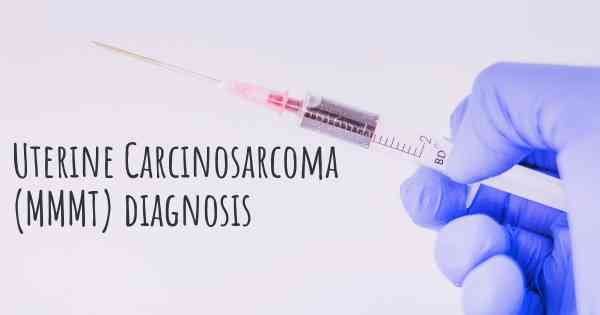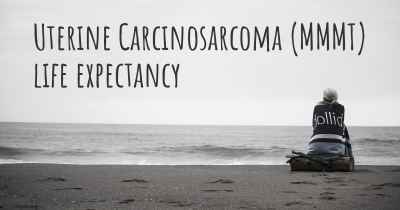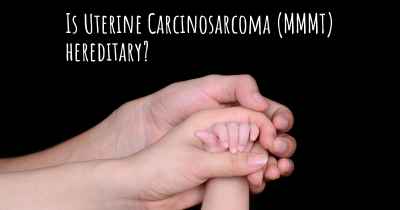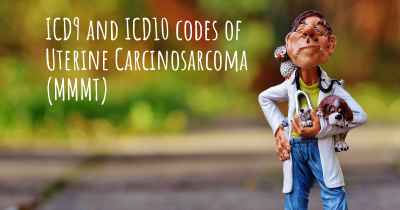How is Uterine Carcinosarcoma (MMMT) diagnosed?
See how Uterine Carcinosarcoma (MMMT) is diagnosed. Which specialists are essential to meet, what tests are needed and other useful information for the diagnosis of Uterine Carcinosarcoma (MMMT)

Uterine carcinosarcoma, also known as malignant mixed Müllerian tumor (MMMT), is a rare and aggressive form of cancer that affects the uterus. It is characterized by the presence of both malignant epithelial and mesenchymal components. Diagnosing uterine carcinosarcoma involves a combination of medical history evaluation, physical examination, imaging tests, and tissue biopsy.
Medical history and physical examination: The first step in diagnosing uterine carcinosarcoma is a thorough evaluation of the patient's medical history and a physical examination. The doctor will inquire about any symptoms the patient may be experiencing, such as abnormal vaginal bleeding, pelvic pain, or a palpable mass. They will also assess the patient's overall health and any risk factors for uterine cancer.
Imaging tests: After the initial evaluation, imaging tests may be ordered to further investigate any abnormalities found during the physical examination. These tests can help determine the extent of the disease and whether it has spread to other organs. The most commonly used imaging techniques for uterine carcinosarcoma include:
- Ultrasound: This non-invasive test uses sound waves to create images of the uterus and surrounding structures. It can help identify the presence of tumors and assess their characteristics.
- Magnetic resonance imaging (MRI): MRI uses powerful magnets and radio waves to produce detailed images of the uterus and nearby tissues. It can provide information about the size, location, and spread of the tumor.
- Computed tomography (CT) scan: CT scans use X-rays and computer technology to create cross-sectional images of the body. They can help determine if the cancer has spread to lymph nodes or other organs.
Tissue biopsy: A definitive diagnosis of uterine carcinosarcoma is made through a tissue biopsy. During this procedure, a small sample of tissue is removed from the uterus and examined under a microscope by a pathologist. There are different types of biopsies that can be performed:
- Endometrial biopsy: This procedure involves collecting a small sample of tissue from the lining of the uterus using a thin, flexible tube. It is typically performed in the doctor's office and does not require anesthesia.
- Dilation and curettage (D&C): D&C is a more invasive procedure that involves dilating the cervix and scraping tissue from the lining of the uterus. It is usually performed under anesthesia in an operating room.
- Surgical biopsy: In some cases, a surgical procedure called a hysterectomy may be necessary to obtain a tissue sample. During a hysterectomy, the uterus is removed, and the tissue is sent to a pathologist for examination.
Staging: Once a diagnosis of uterine carcinosarcoma is confirmed, further tests may be performed to determine the stage of the cancer. Staging helps determine the extent of the disease and guides treatment decisions. Common staging procedures for uterine carcinosarcoma include imaging tests, such as CT scans or PET scans, and sometimes additional biopsies of lymph nodes or other organs.
It is important to note that the diagnosis and management of uterine carcinosarcoma should be done by a multidisciplinary team of healthcare professionals, including gynecologic oncologists, radiologists, and pathologists. They work together to ensure an accurate diagnosis and develop an appropriate treatment plan tailored to each patient's specific needs.








